We use ability setting in some subjects and year groups. Further information about arrangements in different year groups can be found below.
Year 7
In Year 7, students are taught in broad ability sets for English, Maths and French. It is important that students are in the most appropriate set for their academic needs and we decide which set best suits each student after careful consideration using a range of information, including student performance in KS2 assessments and information provided by a child’s primary school. We review our students’ sets periodically and occasionally adjust sets should progress be faster or slower than anticipated.
Higher sets are indicated by a lower letter or number (i.e. A and 1). So 7KA1 is Year 7, K Band, Higher Set (A1).
We include some parallel sets, which means that both classes are made up of students of similar academic ability and cover the same or similar material.
Year 8
In Year 8, students are taught in sets for English, Maths, French and German. It is important that students are in the most appropriate set for their academic needs and we decide which set best suits each student after careful consideration using a range of information, including student performance throughout Year 7 and assessments. We review our students’ sets periodically and occasionally adjust sets should progress be faster or slower than anticipated. We include some parallel sets, which means that both classes are made up of students of similar academic ability and cover the same or similar material.
| Subject | Further information on setting in this subject |
| English | There are 8 sets: KA1, KA2, KA3, KB, TA1, TA2, TA3, TB. Parallel sets are KA1 and TA1, KA2 and TA2, KA3 and TA3, KB and TB. |
| Mathematics | There are 8 sets: 1, 2a, 2b, 4, 5a, 5b,7 and 8. Parallel sets are 2a and 2b. |
| French | There are 6 sets: KA, KB, KCX, TA, TB, TCX. Parallel sets are KA and TA, KB and TB, KCX and TCX. |
| German | There are 8 sets: KA, KB, KCX, KCY, TA, TB, TCX and TCY. Parallel sets are KA and TA, KB and TB, KCX and TC. |
Year 9
At the end of Year 8, we review our students’ sets in English, Maths, Science, French and German to check they are in the most appropriate Year 9 set for their academic needs. Our decisions are made after careful consideration using a range of information, including assessments and student performance throughout Year 8. We review our students’ sets periodically and occasionally adjust sets should progress be faster or slower than anticipated. We include some parallel sets, which means that both classes are made up of students of similar academic ability and cover the same or similar material.
| Subject | Further information on setting in this subject |
| English | There are 8 sets: KA1, KA2, KA3, KB, TA1, TA2, TA3, TB. Parallel sets are KA1 and TA1, KA2 and TA2 and so on. |
| Mathematics | There are 8 sets: 1, 2, 3, 4, 5a, 5b, 7 and 8. Parallel sets are 5a and 5b. |
| Science | There are 8 sets: KA, KB, KC, KD, TA, TB, TC and TD. Parallel sets are KA and TA, KB and TB and so on. |
| French | There are 3 sets: FR1, FR2 and FR3. |
| German | There are 3 sets: GM1, GM2, GM3 and GM4. |
| Spanish | There is 1 set: SA1 |
Years 10 and 11
In Year 10, we review the setting in English, Maths, Science. We also set students in French, German and Spanish where possible. Year 10 sets are linked to the ‘tiers of entry’ for the final GCSE exams at the end of Year 11 and more information is provide below.
How we decide on each student’s sets
Our sets are structured so that all groups are taught to their maximum potential. We decide on the most appropriate set for each student’s academic needs using a range of information, including student class performance during Year 9, other assessment outcomes and their GCSE potential. We review our students’ sets periodically and will occasionally make adjustments should progress be faster or slower in Key Stage 4 than anticipated.
What this means for tiers of entry in their GCSE exams
Most GCSE examinations consist of identical question papers sat by all students taking that subject with a final grade achieved in the range of 1-9 depending on the student’s total marks. However, for some subjects, the Examination Board provides ‘higher’ or ‘foundation’ question papers and which paper a student sits is selected by their teacher. This is known as a ‘Tier of Entry’. Foundation tier examinations are suitable for those students most likely to achieve a grade 5 or below. Whereas the more challenging higher tier examinations are for students who are most likely to comfortably achieve a grade 5 or above. In choosing each student’s tier of entry we are mindful that students who take higher tier exams but don’t achieve a grade 4 or better will receive a grade ‘U’ (fail).
We delay the final decision on tiers of entry until after Year 11 mock exams wherever possible. However for some subjects, we need to align teaching with the higher tier at the start of Year 10, particularly where there is a wider range of knowledge required by students to achieve grades 7 and above.
| Subject | Further information on setting in this subject |
| English | There are 9 groups: XA1, XA2, XA3, XA4, XB and YA1, YA2, YA3, YB. a): XA1 and YA1 are parallel groups. b): XA2, XA3, XA4, YA2and YA3 are broadly parallel groups. c): XB and YB are parallel groups. d): There are no tiers of entry in English exams. |
| Mathematics | There are 9 sets: 1, 2, 3, 4, 5a, 5b, 7a, 7b and 7c. a): Sets 1, 2, 3 and 4 are higher tier b): Sets 5a and 5b are foundation tier, however there are occasional transfers to higher tier. c): Sets 7a, 7b and 7c are foundation tier. d): Parallel sets are 5a and 5b, 7a and 7b. |
| Science |
There are 9 sets: XSB, X1, X2, X3, X4 and Y1, Y2, Y3, Y4. d) XSB is for those students who have chosen to study the separate sciences. |






